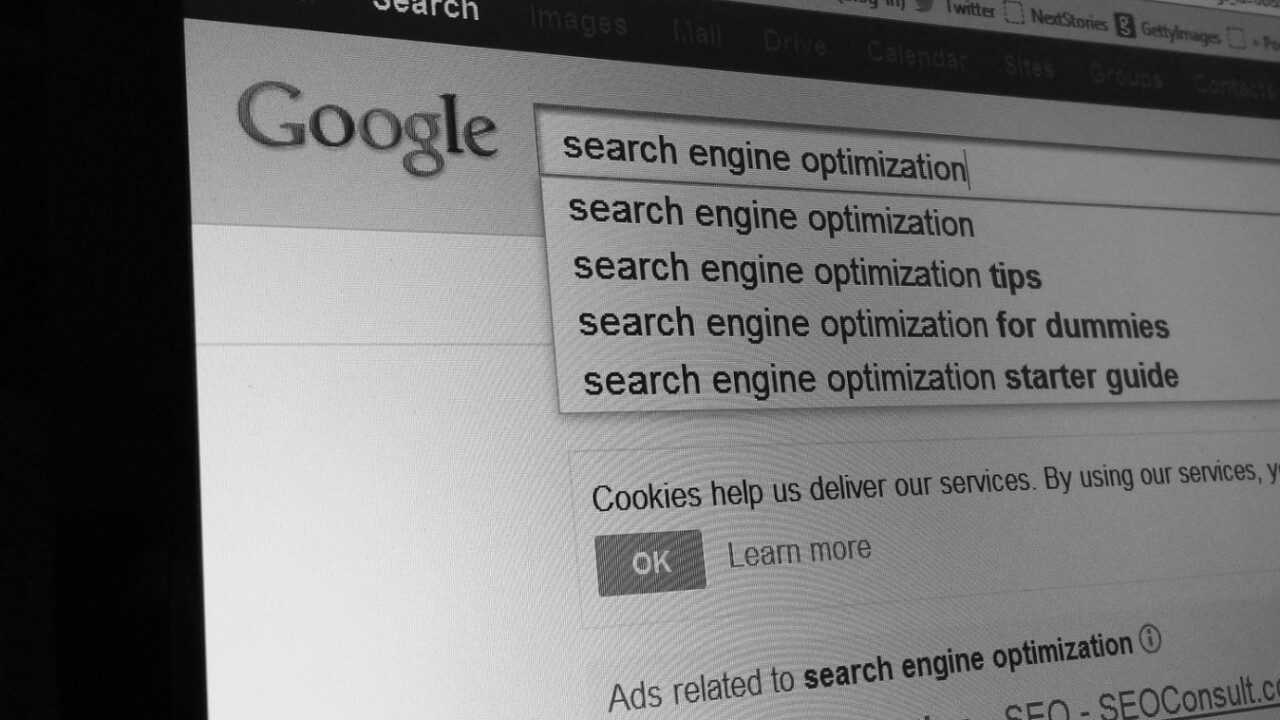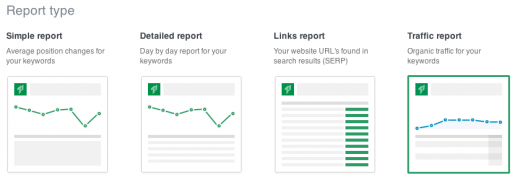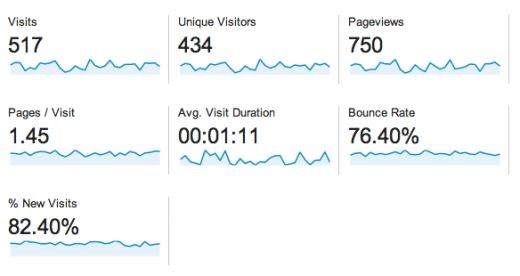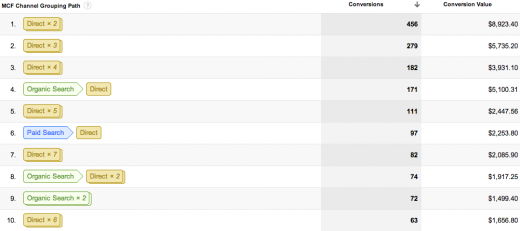
Brian Honigman is a marketing consultant, a professional speaker and a freelance writer. This post originally appeared on the Positionly blog.
Measuring the success of your search engine optimization efforts is important to ascertain whether your time, money and efforts are allocated effectively. SEO is one of the more common methods of driving relevant visitors to your website that convert into paying customers, since they are most likely interested in purchasing your products or services.
To measure the return on investment – or ROI – of your SEO campaigns, utilize the information aggregated from Positionly and Google Analytics to pull through the data and analyze patterns in traffic, increases in links, sustainable traffic and above all, increases in revenue.
1. Rising non-branded organic traffic
An increase in traffic to your website is typically a good sign that your company is well-matched for its keyword searches in the search engine results. However, it’s important to not only get more traffic from visitors searching for your business by brand name but more so from related keywords that are non-branded.
Browse through the non-branded keywords that drove traffic to your website by viewing the Acquisition section of Google Analytics, then to Keywords and finally to the Organic report.
To filter out the branded keywords from the report to easily separate what traffic non-branded vs. branded keywords drove, select advanced on the Organic report.
From there select exclude from the first drop down menu, then keyword, select containing and add all the versions of your brand name to exclude them from keywords shown on the report by clicking add a dimension.
It’s important to differentiate this traffic to your website and understand if it’s effectively growing overtime because this traffic is typically comprised of new visitors unfamiliar with your business but possibly in need of your products or services.
The branded organic traffic is visitors already familiar with your business, some of which are existing customers.
Using the integration between Positionly and Google Analytics, it’s possible to filter out which traffic is which to get a better sense of what’s happening with visitors on your website.
To illustrate the success of your keywords across the search engines, generate a traffic report in Positionly to understand which keywords are driving organic traffic with or without branded terms. Use this metric for success to best understand if your business is growing traffic from new visitors, existing visitors or both.
2. Increased inbound links
Inbound links are the lifeblood of SEO. When another website links to yours, it’s a vote of confidence that is taken into consideration by Google to ascertain what subject a particular company is an expert on and rank their site accordingly.
Increasing the variety of inbound links to your website is an effective way of gaining more visibility in the search engines and therefore, better rankings, more traffic and increased revenue.
To quickly and easily monitor the inbound links your website is generating overtime, use the free backlink tool from Majestic SEO to understand how many external backlinks there are in total pointing to your website and the number of referring domains from those links since the variety of sources of these links is important.
Measure the increase of inbound links over a three, six and twelve-month period to understand what content on your website helped draw the most links. The rise of inbound links to your website can help inform your future content marketing efforts by shinning light on what works and what doesn’t.
Analyze what infographics, blog posts, product pages, webinars, eBooks, white papers, etc. drove the most quality inbound links to your website and then attempt to duplicate your success.
3. High quality traffic
Sending lots of unqualified traffic to your website is useless, but unfortunately this happens often when a professional that practices black hat SEO strategies is involved.
Traffic in high numbers is important to the continuing growth of the company, but this traffic must be relevant to your website’s offerings or the traffic will leave your website shortly after they arrive on your homepage.
Quality traffic to your website is more likely to convert into customers since your offerings are related to the interests of those visitors. To access this reporting in Google Analytics and fully understand the quality of the traffic on your website, visit the Audience section of the dashboard and visit the Behavior report.
Measure the quality of your traffic by analyzing bounce rate, time on site and pages per visit, all of which indicate that a visitor is in fact more engaged with your website.
If the bounce rates begin to rise, the time on site and the pages per visit begin to fall, then it’s time to revaluate the sources of traffic that are driving visitors to your website.
Aim to generate quality links to your website, guest blog on relevant publications, use social media wherever your audience is active and more to help ensure your audience was as relevant as possible. Converting traffic into customers is when the return on your investment from search can clearly be seen.
4. Most importantly – revenue
Above rankings, links and any other metric for determining the ROI of your SEO, revenue is by far the most telling and critical means of measurement for your company.
The quality of your traffic and links to your website affect the revenue generated from your SEO efforts, but alone they are meaningless if they don’t convert into money for your business.
To ensure a worthwhile ROI from SEO for your business that generates consistent revenue, work on driving conversions from traffic that it is highly targeted and interested in your company’s offerings.
Focus on building links to your website from relevant sources where your ideal customer is most active to help encourage more conversions.
A conversion can be a completed sign up to your email newsletter, which is considered a goal completion in Google Analytics, that will lead to revenue in the future or a purchase directly from your website.
The Multi-Channel Funnels report in Google Analytics is extremely helpful at visualizing which marketing channels assisted a user in their journey to conversion on your website.
Last-click attribution used to be the standard for measuring conversion, but today many touch points across the purchasing funnel affect a consumer’s decision to make a purchase and convert. It is important as a business owner or a marketer to understand how these channels affect one another and can drive further conversions for your business in the future.
It isn’t about the quantity of traffic or links, but more so the approach to attracting the right kind of quality people to the website that are farther down the buyer’s pipeline and ready to make a purchase once they’ve found the right product (ideally yours) or learned something helpful from your content.
How is your company measuring the ROI of your SEO campaigns? Which metrics tend to be the most effective in highlighting success? Share your thoughts in the comments below.
Get the TNW newsletter
Get the most important tech news in your inbox each week.











